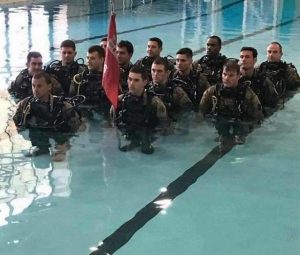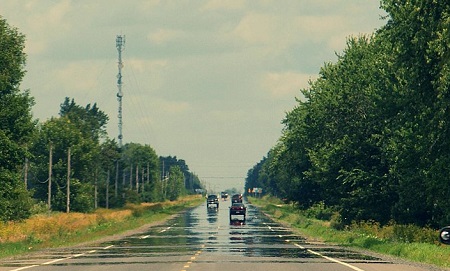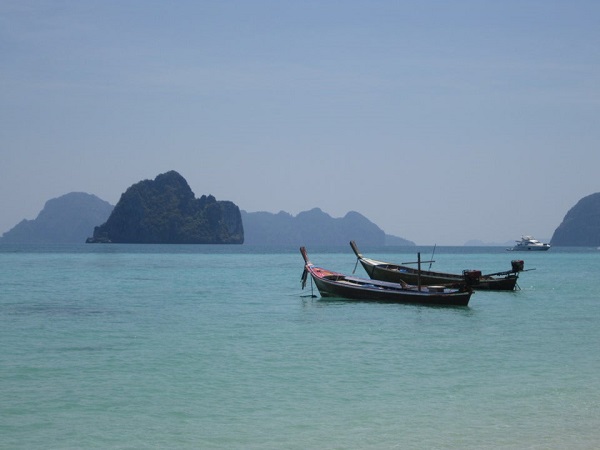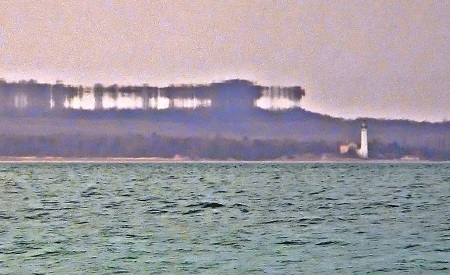Mirages are images caused by atmospheric refraction.
Let’s break that information down:
Understanding refraction
Light has different speeds depending on the medium. It travels the fastest in a vacuum, and still pretty fast in air as well. When it has to go through glass or water, however, it slows down significantly. A straw in a glass of water will look bent where it breaks through the water.
So, whenever light changes from one medium to another at an angle, one side of the “ray” is slower then the other side. The light will bend and we call this refraction. Here are some examples of refraction:
- Rainbows are caused by light hitting water drops and bending in the same way a prism works.
- Lenses work thanks to refraction in glass. Glasses, microscopes, binoculars and cameras all use refraction.
These soldiers also suffer from a case of refraction:

Check out our gallery of optical illusions caused by refraction.
Refraction in air
The refraction of light in air depends on the density of the air, and therefore on the air temperature and pressure. A very good example of visible refraction in air is a heat haze. On a hot summer day you can observe a typical haze above asphalt indicating the hot air mixing with the cold air. These are therefore often called “highway mirages”.

Inferior mirages
Highway mirages are inferior mirages. When a layer of hot air sits below cooler air, the light from the sky will bend upwards as soon as it comes close to the hot air. We see this often happening on asphalt or in the desert.
By bending the light all the way upwards, the image gets flipped upside down. In many cases this means that we get to see a blue reflection of the sky on the layer of hot air. Our brain will complete the illusion by concluding that it is water; the oasis in the desert, the wet patches on the highway or tarmac.

Superior mirages
A superior mirage works in the opposite way of an inferior mirage. There is a layer of cold air below warmer air and light will bend downwards when it reaches the colder air. This occurs often on the ocean or over ice, especially in polar regions or just after sunrise.
When light gets bent down, we will perceive the image to sit higher than it actually is. A common example is a ship or an island that seems to float a little above the water.

Fata Morgana
The illusion that plagued people in legends as well as in real history is the Fata Morgana. The name comes from the sorceress Morgan le Fay in Arthurian legend, who was said to conjure castles in the air to lure sailors to their doom. It’s usually described as something mysterious that can’t be reached, but it is an optical illusion; an extreme form of mirage.
Fata Morgana happens when multiple layers of refraction stack on top of one another, due to strong temperature gradients in the atmosphere. The result is often unrecognizable and often appears layered, stacked, or rapidly changing. You might see:
-
A ship split into strange blocks or stretched towers
-
Floating cliffs and coastlines
-
A “wall” on the horizon that melts or shimmers
In history, some phantom islands have been put on maps, but even in modern days people get tricked by Fata Morgana’s and report seeing UFOs.

